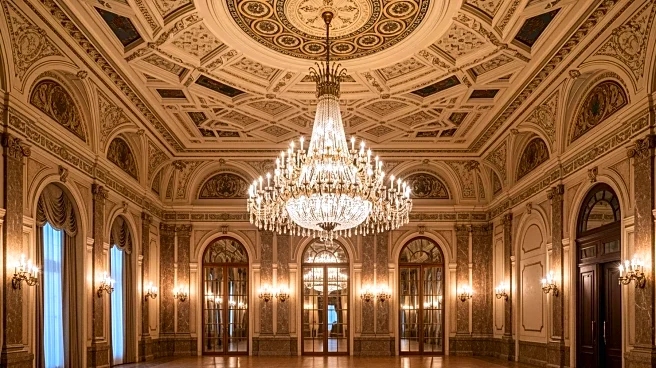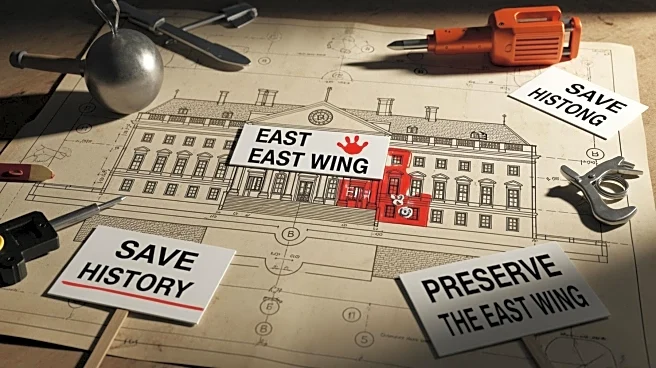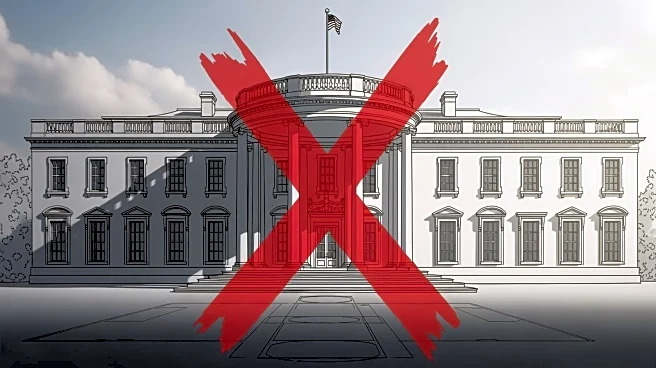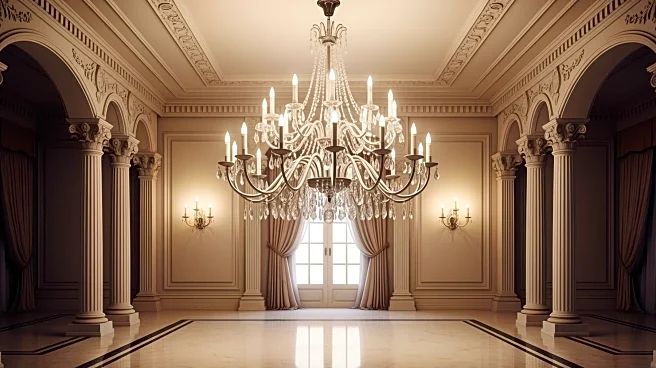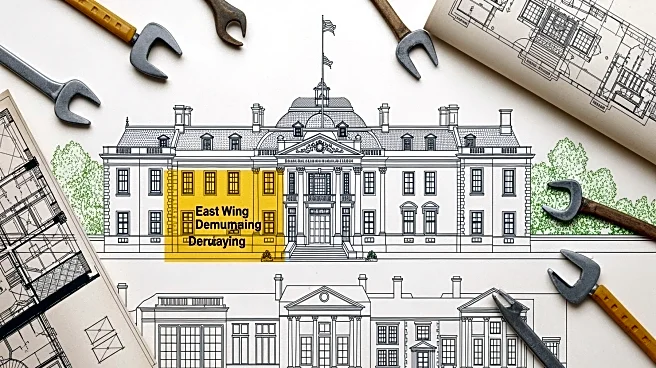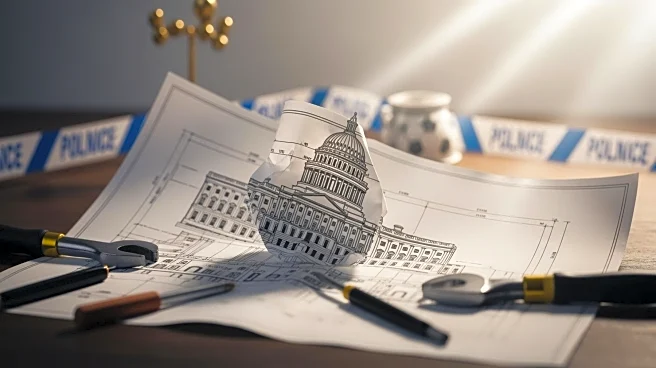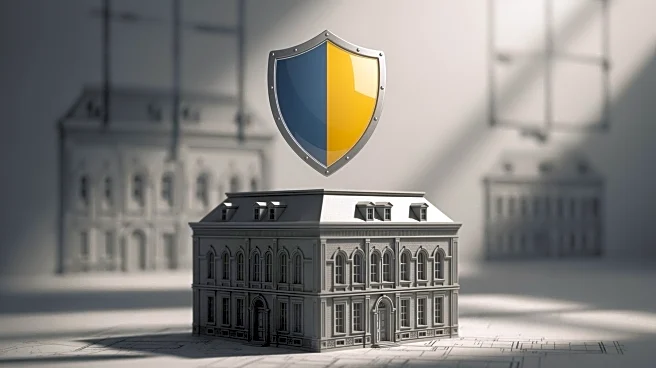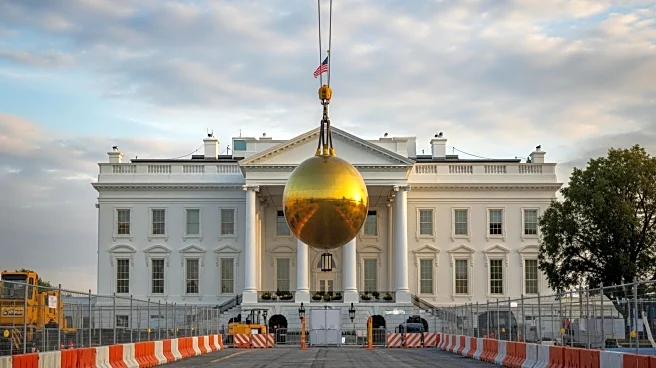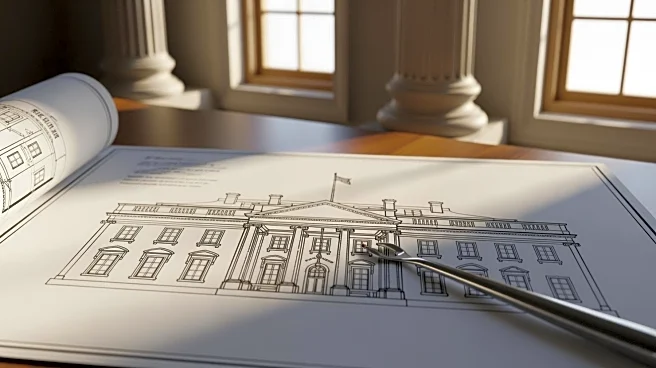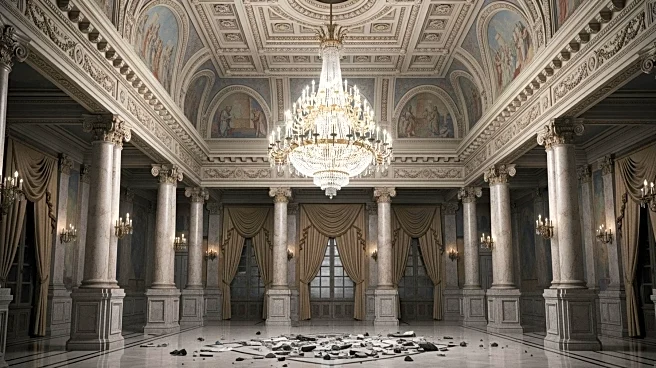What's Happening?
The East Wing of the White House, a historic structure that has served as the entrance for millions of Americans on official tours and housed the offices of every first lady for nearly half a century,
was demolished on Thursday. The building, which stood for 123 years, was removed under the orders of President Trump. He described the East Wing as 'a very small building' that obstructed his plans for a new 90,000-square-foot, $300 million ballroom. The demolition also included the Jacqueline Kennedy Garden and the East Colonnade, which connected the East Wing to the White House and housed the president's theater.
Why It's Important?
The demolition of the East Wing has sparked significant controversy and backlash, particularly from preservationists and Democrats who mourn the loss of a historic site. The East Wing was not only a part of the White House's architectural heritage but also a symbol of the role of first ladies and the ceremonial aspects of the presidency. The decision to replace it with a ballroom reflects President Trump's priorities and vision for the White House, which may not align with those of historical preservationists or traditionalists. This move could have implications for how future administrations approach the balance between modernization and preservation of historical sites.
What's Next?
The construction of the new ballroom is expected to proceed following the demolition. It remains to be seen how this development will affect President Trump's relationship with preservationists and political opponents. The decision may also prompt discussions about the preservation of other historical sites within the White House complex and how future changes should be managed.
Beyond the Headlines
The removal of the East Wing raises questions about the cultural and historical value of presidential residences and the extent to which they should be preserved. It also highlights the ongoing debate between modernization and preservation, particularly in iconic government buildings. The decision could set a precedent for future alterations to the White House and other historic sites.
